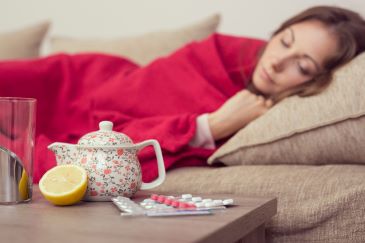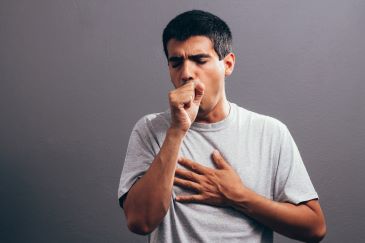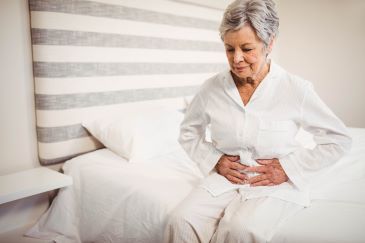Leaflets to discuss with patients
| Site: | Royal College of General Practitioners - Online Learning Environment |
| Course: | TARGET antibiotics toolkit hub |
| Book: | Leaflets to discuss with patients |
| Printed by: | Guest user |
| Date: | Friday, 12 December 2025, 10:33 AM |
Description
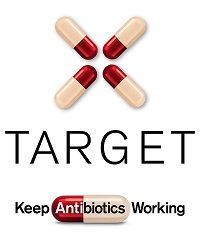 Using patient
leaflets interactively in consultations is the best way to support effective discussions and maintain patient satisfaction.
Using patient
leaflets interactively in consultations is the best way to support effective discussions and maintain patient satisfaction.
Version 1.0, November 2021.
Leaflets to discuss
Access the TARGET patient information leaflets through the tiles below or using the contents pages. All leaflets have been developed in collaboration with clinicians and patients and have received the Crystal Mark for Plain English
Please note: Web versions can be sent directly to patients by copying the URL link.
Translations and user guides are available by clicking on downloads.
How to use the leaflets
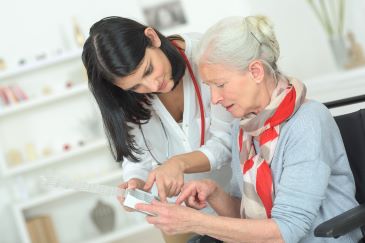
Guidance on the best approach to using leaflets during consultations
Access pageLeaflets for other settings
Community pharmacy - if you are supplying antibiotics (e.g., by PGD or Pharmacy First), please use the leaflets above. If you are not supplying antibiotics, the community pharmacy section has versions of the RTI and UTI leaflets which may be more suitable.
Out of hours - The leaflets above may be suitable or adaptable for OOH settings. A version of the RTI leaflet has been adapted for OOH.
Self-care Leaflet
The Managing Your Common Infection (Self-Care) leaflet can be used as a tool to increase patients’ confidence and knowledge on how to self-care for their own infections thereby potentially reduce inappropriate antibiotic use.
Managing your common infection (self-care) leaflet (Welsh)
Managing common infection (self-care) leaflet translations
- Managing Your Common Infection (Self-Care Leaflet) Albanian (PDF)
- Managing Your Common Infection (Self-Care Leaflet) Arabic (PDF)
- Managing Your Common Infection (Self-Care Leaflet) Bengali (PDF)
- Managing Your Common Infection (Self-Care Leaflet) Bulgarian (PDF)
- Managing Your Common Infection (Self-Care Leaflet) Chinese (Traditional/Cantonese) (PDF)
- Managing Your Common Infection (Self-Care Leaflet) Farsi (PDF)
- Managing Your Common Infection (Self-Care Leaflet) French (PDF)
- Managing Your Common Infection (Self-Care Leaflet) Greek (PDF)
- Managing Your Common Infection (Self-Care Leaflet) Gujarati (PDF)
- Managing Your Common Infection (Self-Care Leaflet) Hindi (PDF)
- Managing Your Common Infection (Self-Care Leaflet) Hungarian (PDF)
- Managing Your Common Infection (Self-Care Leaflet) Italian (PDF)
- Managing Your Common Infection (Self-Care Leaflet) Kurdish Sorani (PDF)
- Managing Your Common Infection (Self-Care Leaflet) Lithuanian (PDF)
- Managing Your Common Infection (Self-Care Leaflet) Mandarin (PDF)
- Managing Your Common Infection (Self-Care Leaflet) Nepali (PDF)
- Managing Your Common Infection (Self-Care Leaflet) Pashto (PDF)
- Managing Your Common Infection (Self-Care Leaflet) Polish (PDF)
- Managing Your Common Infection (Self-Care Leaflet) Portuguese (PDF)
- Managing Your Common Infection (Self-Care Leaflet) Punjabi (PDF)
- Managing Your Common Infection (Self-Care Leaflet) Romanian (PDF)
- Managing Your Common Infection (Self-Care Leaflet) Russian (PDF)
- Managing Your Common Infection (Self-Care Leaflet) Slovak (PDF)
- Managing Your Common Infection (Self-Care Leaflet) Somali (PDF)
- Managing Your Common Infection (Self-Care Leaflet) Spanish (PDF)
- Managing Your Common Infection (Self-Care Leaflet) Swahili (PDF)
- Managing Your Common Infection (Self-Care Leaflet) Tamil (PDF)
- Managing Your Common Infection (Self-Care Leaflet) Tigrinya (PDF)
- Managing Your Common Infection (Self-Care Leaflet) Turkish (PDF)
- Managing Your Common Infection (Self-Care Leaflet) Ukrainian (PDF)
- Managing Your Common Infection (Self-Care Leaflet) Urdu (PDF)
For any leaflet queries please contact us: TARGETantibiotics@ukhsa.gov.uk
Self-care Leaflet - web version
How can I manage my common infection?
A leaflet for adults aged 16 years and over
Version 2.0. Published: November2024. Revision date: November 2027
Developed with healthcare professionals, patients and professional medical bodies. TARGET is operated by the UK Health Security Agency
Contents
What are the symptoms of a common infection?

How common is my infection?
Every year in the UK…
adults experience 2-3 colds, on average (more common in children)

1 in 5 people have a gut infection

1 in 10 people have a sinus infection

How can I treat a common infection?
- Get plenty of rest until you feel better.
- Take pain relief if you need to (make sure you follow the instructions).
- Drink enough fluids to avoid dehydration and pass urine regularly (6 to 8 cups or glasses).
- For coughs, try honey and cough medicines.
- For sore throats, try medicated lozenges and pain relief.
- Soothe eye infections with boiled and cooled water on the eyelids, apply cool compresses gently around the eye.
- For an outer ear infection, consider over-the-counter ear drops.
How long could my infection last?
Cough
3 to 4 weeks
Sore throat or earache
7 to 8 days
Common cold
14 days
Norovirus (winter vomiting)
2 to 3 days
Sinus infection
3 to 4 weeks
Eye infection
7 to 14 days
Contact your GP if your symptoms are getting worse or if you are not better by the times above.
Will my infection need antibiotics to get better?
- Your body can normally fight off common infections on its own
- You do not usually need antibiotics unless symptoms of a bacterial infection are severe – follow your healthcare professional’s advice on this
- Taking antibiotics when you do not need to may put you and your family at risk
- Follow your healthcare professional’s advice on antibiotics
- Find out more about antibiotics at www.antibioticguardian.com
How can I stop my infection from spreading?
If you need to cough or sneeze:
Catch it with a tissue (or your inner elbow)
Bin it – throw away used tissues
Kill it – clean your hands
Clean hands for at least 20 seconds with soap and water or hand sanitiser:
before preparing and eating food
after using the toilet
after touching pets or animals
when leaving and arriving home
Avoid touching your eyes, nose or mouth with unclean hands. If possible, keep your distance from others (2 meters or 6 feet), especially vulnerable people in your household.
Do not share items that come into contact with your mouth, such as eating utensils and toothbrushes.
Keep yourself and your family up to date with vaccinations. Always get winter vaccines (such as flu) if you are eligible.
What symptoms of serious illness should I look out for?
Severe headache and vomiting
Ongoing fever or chills (temperature above 38ºC or less than 36ºC)
Problems swallowing
Coughing blood
Breathing faster or slower than usual, chest pain or tightness
Kidney pain in your back just under your ribs
New very fast or slow pulse
Very cold skin
If you have the symptoms above, contact your GP urgently or use the following services for your region.
NHS England
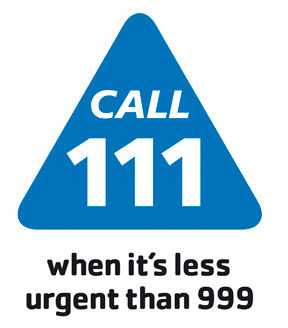
NHS 111 Wales

NHS Scotland

Northern Ireland
Contact your GP practice

These services can provide a confidential interpreter if you need one.
What if I suspect signs of sepsis?
Sepsis is a life-threatening reaction to an infection. Possible signs are:
- slurred speech, confusion or drowsiness
- extreme shivering
- passing no urine in a day
- severe breathlessness
- it feels like you’re going to die, and
- skin blotchy or discoloured
If you suspect sepsis: Call 999 immediately
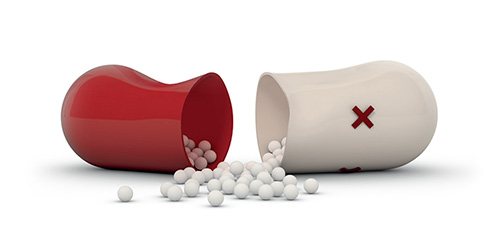
For any leaflet queries please contact us:
TARGETantibiotics@ukhsa.gov.ukUTI Leaflet - Women Under 65 Years
The Treating Your Urinary Tract Infection (UTI) patient information leaflet has been designed to be used with women under 65 years who are experiencing urinary symptoms suggesting uncomplicated UTIs. This leaflet supports implementation of recommendations in the NICE guidelines on processes for antimicrobial stewardship and behaviour change for antimicrobial stewardship.
TYI-UTI leaflet for women under 65 years leaflet (Welsh)
TYI-UTI leaflet for women under 65 years leaflet translations
- TYI-UTI leaflet (PDF) Albanian
- TYI-UTI leaflet (PDF) Arabic
- TYI-UTI leaflet (PDF) Bengali
- TYI-UTI leaflet (PDF) Bulgarian
- TYI-UTI leaflet (PDF) Chinese (Traditional/Cantonese)
- TYI-UTI leaflet (PDF) French
- TYI-UTI leaflet (PDF) Farsi
- TYI-UTI leaflet (PDF) Greek
- TYI-UTI leaflet (PDF) Gujarati
- TYI-UTI leaflet (PDF) Hindi
- TYI-UTI leaflet (PDF) Hungarian
- TYI-UTI leaflet (PDF) Italian
- TYI-UTI leaflet (PDF) Kurdish Sorani
- TYI-UTI leaflet (PDF) Lithuanian
- TYI-UTI leaflet (PDF) Mandarin
- TYI-UTI leaflet (PDF) Nepali
- TYI-UTI leaflet (PDF) Pashto
- TYI-UTI leaflet (PDF) Polish
- TYI-UTI leaflet (PDF) Portugese
- TYI-UTI leaflet (PDF) Punjabi
- TYI-UTI leaflet (PDF) Romanian
- TYI-UTI leaflet (PDF) Russian
- TYI-UTI leaflet (PDF) Slovak
- TYI-UTI leaflet (PDF) Somali
- TYI-UTI leaflet (PDF) Spanish
- TYI-UTI leaflet (PDF) Swahili
- TYI-UTI leaflet (PDF) Tamil
- TYI-UTI leaflet (PDF) Tigrinya
- TYI-UTI leaflet (PDF) Turkish
- TYI-UTI leaflet (PDF) Ukrainian
- TYI-UTI leaflet (PDF) Urdu
For any leaflet queries please contact us: TARGETantibiotics@ukhsa.gov.uk
UTI Leaflet - Women Under 65 - web version
Treating your urinary tract infection (UTI)
For women under 65 years with suspected lower urinary tract infections (UTIs) or lower recurrent UTIs (cystitis or urethritis)
Version 24.0. Published: November 2024. Revision date: November 2027
Developed with healthcare professionals, patients and professional medical bodies. TARGET is operated by the UK Health Security Agency
Possible urinary signs and symptoms
Key signs and symptoms
- Dysuria: Burning pain when peeing
- New nocturia: Needing to pee in the night
- Cloudy urine: Pee looks cloudy
Other signs and symptoms to consider
- Frequency: Peeing more often than usual
- Urgency: Feeling the need to pee immediately
- Haematuria: Blood in your urine
- Suprapubic pain: Pain in your lower tummy
Other things to consider
Recent sex
- Inflammation due to sex can feel similar to the symptoms of a UTI
- Some sexually transmitted infections (STIs) can have symptoms similar to those of a UTI
Changes during menopause
- Some changes during the menopause can have symptoms similar to those of a UTI
Self-care to help yourself get better more quickly
- Drink enough fluids to stop you feeling thirsty. Aim to drink 6 to 8 glasses a day
- Avoid too much alcohol, fizzy drink or caffeine that can irritate your bladder
- Take paracetamol or ibuprofen as advised for pain relief, if you have had no previous side effects
- You could try taking cranberry capsules or cystitis sachets. Some women find these effective. The evidence to support their use is inconclusive.
- Consider the risk factors in the ‘Options to help prevent UTI’ column to reduce future UTIs
The outcome and recommended care
If you are not pregnant
If you have none, or only one of, dysuria, new nocturia or cloudy urine, or you have a vaginal discharge (on its own or with any of the above):
The outcome
- a UTI is much less likely;
- you may need a urine test to check for a UTI
- antibiotics are less likely to help; and
- the infection will usually last 5 to 7 days
Recommended care
- Self-care and pain relief
- symptoms may get better on their own
- Delayed or backup prescription with self-care and pain relief.
Start antibiotics if your symptoms:- get worse, or do not get a little better with self-care within 48 hours
If you have 2 or more of dysuria, new nocturia, cloudy urine or bacteria in your urine and no vaginal discharge:
The outcome
- a UTI is more likely and antibiotics should help
- you should start to improve within 48 hours
- symptoms usually last 3 days
Recommended care
- Immediate treatment with antibiotics, plus self-care
- If your symptoms are mild, start delayed or backup treatment with antibiotics, plus self-care
If you are pregnant
The outcome
Always ask for a urine culture test if suspected UTI
Recommended care
Immediate treatment with antibiotics, plus self-care
Options to help prevent a UTI
It may help you to consider the following risk factors:
- Stop bacteria spreading from your bowel into your bladder. Wipe from front (vagina) to back (bottom) after using the toilet
- Avoid waiting to go to the toilet. Pee as soon as you need to
- Go for a pee after having sex to flush out any bacteria that may be near the opening to the urethra
- Wash the external vagina area with water before and after sex to wash away any bacteria that may be near the opening to the urethra
- Drink enough fluids to make sure you pee regularly throughout the day, especially during hot weather
If you have repeated UTIs, discuss this with a healthcare professional. The following may help.
- There is good evidence to show that vaginal hormonal treatment may help after the menopause
- You could try taking cranberry products, D-mannose or probiotics. Some women find these effective. The evidence to support their use is inconclusive
Antibiotic resistance
- Antibiotics can be lifesaving. But they are not always needed for urinary symptoms
- Taking any antibiotics can make bacteria that live inside your body more resistant. This means that antibiotics may not work when you really need them
- This may make future UTIs more difficult to treat
- Common side effects of taking antibiotics include thrush, rashes, nausea, vomiting and diarrhoea. Get medical advice if you are worried
- Keep antibiotics working – only take them when advised by a health professional. This way they are more likely to work for a future UTI
Types of urinary tract infection
UTIs are caused by bacteria getting into your urethra or bladder, usually from your gut. Infections may occur in different parts of the urinary tract.

When should you get help?
Contact your GP practice or NHS 111
The following symptoms are possible signs of serious infection and should be assessed urgently. Phone for advice if you are not sure how urgent the symptoms are.
- You have shivering, chills and muscle pain
- You feel confused, or are very drowsy
- You have not been for a pee all day
- You are vomiting
- You see blood in your urine
- Your temperature is above 38ºC or less than 36ºC
- You have kidney pain in your back just under the ribs
- Your symptoms get worse
- Your symptoms are not starting to improve within 48 hours of taking antibiotics

For any leaflet queries please contact us:
TARGETantibiotics@ukhsa.gov.ukUTI Leaflet - all adults
This leaflet contains information for all adults in an easily accessible booklet style format with icons and images. This leaflet has been designed for use in the primary care setting, including general practice, community pharmacy and for use by carers and in care homes. It is suitable for consultations to facilitate dialogue between a patient or their carer and their healthcare professional on specific topics related to managing their UTI.
For a fully referenced version of the leaflet, please email: TARGETantibiotics@ukhsa.gov.uk
UTI leaflet combined for adults (Welsh)
UTI leaflet combined for adults translations
- TYI-UTI Combined for adults PDF Albanian
- TYI-UTI Combined for adults PDF Arabic
- TYI-UTI Combined for adults PDF Bengali
- TYI-UTI Combined for adults PDF Bulgarian
- TYI-UTI Combined for adults PDF Chinese (Traditional/Cantonese)
- TYI-UTI Combined for adults PDF Farsi
- TYI-UTI Combined for adults PDF French
- TYI-UTI Combined for adults PDF Greek
- TYI-UTI Combined for adults PDF Gujarati
- TYI-UTI Combined for adults PDF Hindi
- TYI-UTI Combined for adults PDF Hungarian
- TYI-UTI Combined for adults PDF Italian
- TYI-UTI Combined for adults PDF Kurdish Sorani
- TYI-UTI Combined for adults PDF Lithuanian
- TYI-UTI Combined for adults PDF Mandarin
- TYI-UTI Combined for adults PDF Nepali
- TYI-UTI Combined for adults PDF Pashto
- TYI-UTI Combined for adults PDF Polish
- TYI-UTI Combined for adults PDF Portuguese
- TYI-UTI Combined for adults PDF Punjabi
- TYI-UTI Combined for adults PDF Romanian
- TYI-UTI Combined for adults PDF Russian
- TYI-UTI Combined for adults PDF Slovak
- TYI-UTI Combined for adults PDF Somali
- TYI-UTI Combined for adults PDF Spanish
- TYI-UTI Combined for adults PDF Swahili
- TYI-UTI Combined for adults PDF Tamil
- TYI-UTI Combined for adults PDF Tigrinya
- TYI-UTI Combined for adults PDF Turkish
- TYI-UTI Combined for adults PDF Ukrainian
- TYI-UTI Combined for adults PDF Urdu
For any leaflet queries please contact us: TARGETantibiotics@ukhsa.gov.uk
UTI – All Adults - web version
Urinary tract infections (UTIs)
A leaflet for adults
Version 2.0. Published: November2024. Revision date: November 2027
Developed with healthcare professionals, patients and professional medical bodies. TARGET is operated by the UK Health Security Agency
Contents
What is a UTI?
A urinary tract infection (UTI) occurs when bacteria in any part of the urinary system cause symptoms. A diagnosis is made mainly on your symptoms. Urine dipstick tests are only used for women under 65 who don’t have a catheter.

What can you do to help prevent a UTI?
Are you drinking enough?
Drink enough fluids. Regular drinks, like water or squash will boost hydration and help your body stay healthy. The NHS England Eatwell Guide recommends that people should aim to drink 6 to 8 glasses of fluid a day. Your bladder can be irritated by too much alcohol, fizzy drink or caffeine.
Stop bacteria spreading from your bowel into your bladder
- Keep your genital area clean and dry. Avoid scented soaps. Change incontinence pads often, and clean your genital area if soiled.
- Pee after having sex.
- Wash the external vaginal area with water before and after sex
- Wipe your genitals from front to back after using the toilet.
Repeated UTIs
- If you are female and past the menopause, vaginal hormone treatments may help.
- If you are male, ask for support from your healthcare professional.
- You could try taking cranberry dietary supplements, D-mannose (for younger women) or probiotics. Some women find these effective. The evidence to support their use is inconclusive.
What symptoms should I look out for?
Signs and symptoms in ALL adults
- Burning pain when peeing
- Peeing at night more often than usual
- Cloudy urine
- Peeing more often than usual
- Feeling the need to pee immediately
- Blood in your urine
- Pain in your lower tummy
If you have a catheter, also consider these symptoms
- Shivering or shaking
- High or low temperature
- Kidney pain in your back just under the ribs
- New or increased confusion, change in behaviour or being unsteady on your feet
Symptoms of a UTI in OLDER, FRAIL adults
These symptoms may be more noticeable in older, frail adults
Wetting yourself more often than usual
New or increased confusion, change in behaviour, or being unsteady on your feet
High or low temperature
Shivering or shaking
Urinary symptoms may also be caused by the following
- Pain or discomfort after sex
- A sexually transmitted infection (STI)
- Vaginal changes during or after the menopause
Other things that may cause confusion in older adults
- Pain
- Poor sleep
- Constipation
- Side effects of medicine
- Poor diet
- Other infection
- Not drinking enough
- Change in routine or home environment
What can I do to feel better?
What you can do
Drink enough fluids. Aim to drink 6 to 8 glasses of water or squash a day
Take paracetamol regularly, up to 4 times a day to relieve pain
You could try taking cranberry capsules or cystitis sachets. Some women find these effective. The evidence to support their use is inconclusive.
What your pharmacist, nurse or doctor may do
Give self-care advice and advise you to take pain relief (paracetamol or ibuprofen)
Ask you for a urine sample to test
You may be given an antibiotic to take immediately or take if your symptoms don’t improve or you start to feel worse.
You may be referred to another healthcare provider
If you have repeated UTIs and self-care options do not help
- You may be prescribed antibiotics to take at night or after sex
- Vaginal hormone treatments may help some women after the menopause
Advice about antibiotics
- Antibiotics can be life saving for serious urine infections, but they are not always needed for mild urinary symptoms
- Taking any antibiotics can make bacteria that live inside your body more resistant. This means that antibiotics may not work when you really need them
- Common side effects of taking antibiotics include thrush, rashes, nausea, vomiting and diarrhoea. Ask for advice if you are worried
- Only take antibiotics if your healthcare professional advises you to – they will work better this way
Taking antibiotics when you don’t need them may put you and your family at risk.
When should I get more urgent help?
You should see a health professional if you have UTI symptoms and:
- your symptoms are getting a lot worse, or not starting to improve within 2 days of starting antibiotics; or
- you are pregnant, male or you have recently had an operation
The following symptoms could be signs of a serious urinary infection and should be assessed urgently
Shivering, chills and muscle pain
Not going for a pee all day
Trouble breathing
Blood in your urine
Feeling very confused, drowsy, or having slurred speech
Temperature above 38ºC or below 36ºC
Kidney pain in your back just under the ribs
Very cold skin
Vomiting
If you have the symptoms above, contact your GP urgently or use the following services for your region.
Trust your instincts – ask for advice if you are not sure how urgent your symptoms are
NHS England

NHS 111 Wales

NHS Scotland

Northern Ireland
Contact your GP practice


For any leaflet queries please contact us:
TARGETantibiotics@ukhsa.gov.ukRTI Leaflet
The Treating Your Respiratory Tract Infection (RTI) patient information leaflet has been designed to be used with patients who are experiencing self-limiting RTIs. This leaflet supports implementation of recommendations in the NICE guidelines on processes for antimicrobial stewardship, behaviour change for antimicrobial stewardship and antibiotic prescribing for respiratory tract infections.
TYI-RTI leaflet (Welsh)
TYI-RTI leaflet translations
- TYI – RTI leaflet Albanian PDF
- TYI – RTI leaflet Arabic PDF
- TYI – RTI leaflet Bengali PDF
- TYI – RTI leaflet Bulgarian PDF
- TYI – RTI leaflet Chinese (Traditional/Cantonese) PDF
- TYI – RTI leaflet Farsi PDF
- TYI – RTI leaflet French PDF
- TYI – RTI leaflet Greek PDF
- TYI – RTI leaflet Gujarati PDF
- TYI – RTI leaflet Hindi PDF
- TYI – RTI leaflet Hungarian PDF
- TYI – RTI leaflet Italian PDF
- TYI – RTI leaflet Kurdish Sorani PDF
- TYI – RTI leaflet Lithuanian PDF
- TYI – RTI leaflet Mandarin PDF
- TYI – RTI leaflet Nepali PDF
- TYI – RTI leaflet Pashto PDF
- TYI – RTI leaflet Polish PDF
- TYI – RTI leaflet Portuguese PDF
- TYI – RTI leaflet Punjabi PDF
- TYI – RTI leaflet Romanian PDF
- TYI – RTI leaflet Russian PDF
- TYI – RTI leaflet Slovak PDF
- TYI – RTI leaflet Somali PDF
- TYI – RTI leaflet Spanish PDF
- TYI – RTI leaflet Swahili PDF
- TYI – RTI leaflet Tamil PDF
- TYI – RTI leaflet Tigrinya PDF
- TYI – RTI leaflet Turkish PDF
- TYI – RTI leaflet Ukrainian PDF
- TYI – RTI leaflet Urdu PDF
For any leaflet queries please contact us: TARGETantibiotics@ukhsa.gov.uk
RTI Leaflet – web version
Treating your respiratory tract infection (RTI)
Version 10.0. Published: November 2024. Revision date: November 2027
Developed with healthcare professionals, patients and professional medical bodies. TARGET is operated by the UK Health Security Agency
Most infections are better by
Middle-ear infection
Most are better by…3 days (can last 7 to 8 days)
Sore throat
7 to 8 days
Sinusitis
14 to 21 days
Common cold
14 days
Cough or bronchitis
3 to 4 weeks
Other Infection
Ask your clinician
How to look after yourself and your family
- Have plenty of rest
- Drink enough fluids to avoid feeling thirsty
- Ask your local pharmacist to recommend medicines to help reduce your symptoms or pain (or both)
- Fever is a sign your body is fighting the infection. It usually gets better by itself in most cases. You can use paracetamol if you (or your child) are uncomfortable because of a fever
- Use a tissue to cover coughs and sneezes and wash your hands with soap to help prevent spreading infection to your family, friends and other people
Never share antibiotics and always return any unused antibiotics to a pharmacy for them to dispose of safely.
When to get help
If any of the below apply to you or your child, get an urgent assessment from a healthcare professional. If your child is under the age of 5, to A&E immediately or call 999.
- Your skin is very cold or has a strange colour, or you develop an unusual rash
- You have new feelings of confusion or drowsiness or have slurred speech
- You have difficulty breathing. Signs that suggest breathing problems include:
- breathing quickly;
- turning blue around the lips and the skin below the mouth;
- skin between or above the ribs getting sucked or pulled in with every breath
If you (or your child) have any of the following symptoms, are getting worse or are sicker than you would expect (even if your temperature falls), trust your instincts and get medical advice urgently from NHS 111 or your GP.
- You develop a severe headache and are sick
- You have a red, swollen tongue
- You have redness, swelling and pain around the eyes or the ears
- You develop chest pain
- You have difficulty swallowing or are drooling
- You cough up blood
- You are peeing very little, or not at all
- You are feeling a lot worse
- Your child has a middle-ear infection and fluid is coming out of their ears or they have new deafness
Less serious signs that can usually wait until you visit a pharmacist or your next available appointment
- You are not starting to improve a little by the time given in the ‘Most are better by 3 days column in the table above
- You have mild side effects such as diarrhoea. Get advice from a healthcare professional if concerned
Back-up antibiotic collection
Your clinician can advise how long you should wait before you collect a back-up antibiotic prescription, only if you are not starting to feel a little better or you feel worse.
- Colds, most coughs, sinusitis, ear infections, sore throats, and other infections often get better without antibiotics, as your body can usually fight these infections on its own
If you need antibiotics, take them exactly as prescribed. Never save them for later and do not share them with others. For more information, visit: www.antibioticguardian.com.
Why it is important to take antibiotics as prescribed
- Taking any antibiotics makes bacteria that live inside your body more resistant. This means that antibiotics may not work when you really need them
Antibiotics can cause side effects such as rashes, thrush, stomach pains, diarrhoea, reactions to sunlight, other symptoms, or being sick if you drink alcohol with the antibiotic metronidazole.

For any leaflet queries please contact us:
TARGETantibiotics@ukhsa.gov.ukRTI leaflet - other settings
For pharmacy versions of the leaflets (including Welsh versions) please refer to our RTI leaflet for community pharmacies section within the TARGET toolkit.
This leaflet has been designed for use in the out of house (OOH) setting. It is suitable for consultations to facilitate dialogue between a patient and their healthcare professional on specific topics related to their RTI.
TYI-RTI leaflet for OOH Clinics (Welsh)
For any leaflet queries please contact us: TARGETantibiotics@ukhsa.gov.uk
RTI Pictorial Leaflet
The leaflet can be used to provide information on RTIs. It is pictorial and uses plain English so that it is suitable for a range of community groups. The leaflet may also be used during primary care consultations to facilitate dialogue between a patient and their healthcare professional on specific topics like treatment or safety netting. We would recommend that the leaflet is used as a tool to interact with patients, rather than as a ‘parting gift’.
TYI-RTI pictorial leaflet (Welsh)
TYI-RTI pictorial leaflet translations
- TYI-RTI Pictorial Albanian (PDF)
- TYI-RTI Pictorial Arabic (PDF)
- TYI-RTI Pictorial Bengali (PDF)
- TYI-RTI Pictorial Bulgarian (PDF)
- TYI-RTI Pictorial Chinese (Traditional/Cantonese) (PDF)
- TYI-RTI Pictorial Farsi (PDF)
- TYI-RTI Pictorial French (PDF)
- TYI-RTI Pictorial Greek (PDF)
- TYI-RTI Pictorial Gujarati (PDF)
- TYI-RTI Pictorial Hindi (PDF)
- TYI-RTI Pictorial Hungarian (PDF)
- TYI-RTI Pictoral Italian (PDF)
- TYI-RTI Pictorial Kurdish Sorani (PDF)
- TYI-RTI Pictorial Lithuanian (PDF)
- TYI-RTI Pictorial Mandarin (PDF)
- TYI-RTI Pictorial Nepali (PDF)
- TYI-RTI Pictorial Pashto (PDF)
- TYI-RTI Pictorial Polish (PDF)
- TYI-RTI Pictorial Portuguese (PDF)
- TYI-RTI Pictorial Punjabi (PDF)
- TYI-RTI Pictorial Romanian (PDF)
- TYI-RTI Pictorial Russian (PDF)
- TYI-RTI Pictorial Slovak (PDF)
- TYI-RTI Pictorial Somali (PDF)
- TYI-RTI Pictorial Spanish (PDF)
- TYI-RTI Pictorial Swahili (PDF)
- TYI-RTI Pictoral Tamil (PDF)
- TYI-RTI Pictorial Tigrinya (PDF)
- TYI-RTI Pictorial Turkish (PDF)
- TYI-RTI Pictorial Ukrainian (PDF)
- TYI-RTI Pictorial Urdu (PDF)
For any leaflet queries please contact us: TARGETantibiotics@ukhsa.gov.uk
RTI Pictorial Leaflet - web version
Respiratory tract infection
A step-by-step guide on how to manage your infection
Version 4.0. Published: November 2024. Revision date: November 2027
Developed with healthcare professionals, patients and professional medical bodies. TARGET is operated by the UK Health Security Agency
What is an RTI?
A respiratory tract infection (RTI) occurs in the upper or lower respiratory tract, causing symptoms. An RTI is usually caused by a virus, but can sometimes be bacterial.
What are some common symptoms of an RTI?

Help yourself to feel better
Whatever your infection, you can do the following to help.
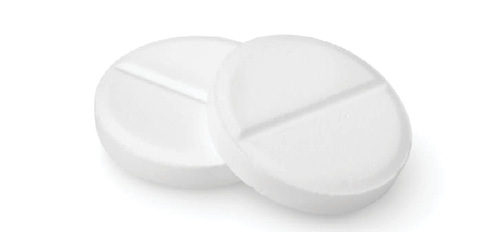
Take paracetamol to reduce pain. Always follow the instructions on the packet.

Ask your pharmacist for advice on reducing your symptoms.

Get plenty of rest until you feel better.
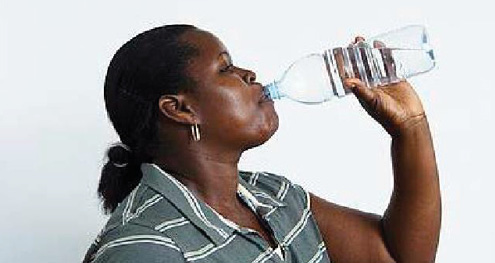
Drink enough fluids to avoid feeling thirsty.
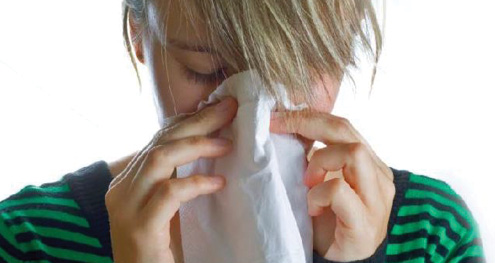
Use tissues when you sneeze to help stop infections spreading.
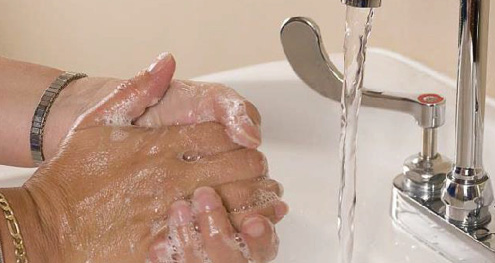
Wash your hands regularly and after using tissues.
For more information, visit the NHS website at www.nhs.uk. Most common infections get better without antibiotics. Find how you can make better use of antibiotics at www.antibioticguardian.com.
Check how long your symptoms last
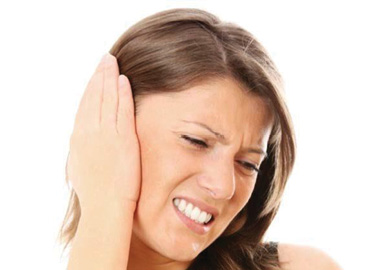
Earache
Most get better by 3 days (can last 7 to 8 days)
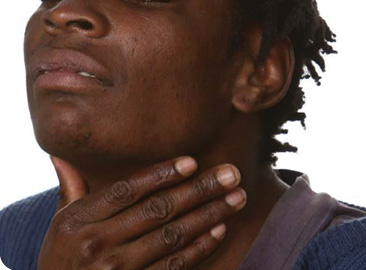
Sore throat
Most get better by 7 to 8 days

Cold
Most get better by 14 days

Cough
Most get better by 3 to 4 weeks
If you are not starting to improve a little by the times given above, visit a pharmacist or contact your GP practice. If you are feeling a lot worse, phone NHS 111 or NHS 24 (see step 4).
Look out for serious symptoms
If you have an infection and develop any of the symptoms below, you should see a doctor urgently. Ring your GP practice or call NHS 111 or NHS 24.

Severe headache

Very cold skin

Trouble breathing

Feeling confused

Chest pain
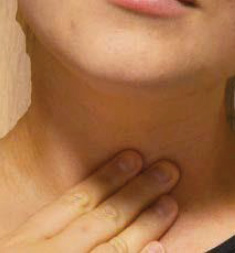
Problems swallowing

Coughing blood
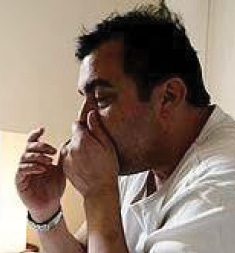
Feeling a lot worse
Where to get help
NHS England

NHS 111 Wales

NHS Scotland

Northern Ireland
Contact your GP practice

If you have an emergency, call 999 immediately.

For any leaflet queries please contact us:
TARGETantibiotics@ukhsa.gov.ukPharmacy Antibiotic Checklist
The antibiotic checklist is for community pharmacy staff to use with patients or carers collecting antibiotics. The checklist has been designed to follow the antibiotic prescription journey, to be completed by patients and pharmacists, to facilitate individualised advice to the patient.
Pharmacy Antibiotic Checklist translations
- Albanian – V2 (PDF)
- Arabic – V2 (PDF)
- Bengali – V2 (PDF)
- Farsi – V2 (PDF)
- French – V2 (PDF)
- Greek – V2 (PDF)
- Gujarati – V2 (PDF)
- Hindi – V2 (PDF)
- Hungarian – V2 (PDF)
- Italian – V2 (PDF)
- Kurdish Sorani – V2 (PDF)
- Lithuanian – V2 (PDF)
- Polish – V2 (PDF)
- Portuguese – V2 (PDF)
- Punjabi (Gurmukhi) – V2 (PDF)
- Romanian – V2 (PDF)
- Simplified Chinese – V2 (PDF)
- Somali – V2 (PDF)
- Spanish – V2 (PDF)
- Swahili – V2 (PDF)
- Tamil – V2 (PDF)
- Tigrinya – V2 (PDF)
- Traditional Chinese – V2 (PDF)
- Turkish – V2 (PDF)
- Urdu – V2 (PDF)
Community pharmacy counselling checklist
This Antibiotic Counselling sheet is a supporting tool to the Antibiotic Checklist, which can help inform the information provided to patients, including how to take antibiotics, their common side effects, and interactions. This was a collaboration between the Public Health England (now the UK Health Security Agency) TARGET Antibiotics toolkit and Public Health Wales and is suitable to be used by healthcare professionals across England and Wales. This counselling sheet underwent consultation with the All-Wales Antimicrobial Guidance Group (AWAGG).
For more information on How Community Pharmacies Can Keep Antibiotics Working, visit Health Education England’s AMR Hub and complete the e-module on Antimicrobial Stewardship for Community Pharmacy.
For any queries in the content of the leaflet please contact us: TARGETantibiotics@phe.gov.uk
Other available leaflets and resources
These resources were not developed by TARGET and are not endorsed by the UKHSA or RCGP, but may be useful in primary care settings.
Healthier Together Web Resources
Healthier Together is a web-based resource endorsed by the Royal College of Paediatrics and Child Health (RCPCH) and the NHS. It’s aim is to improve the quality of care for pregnant women, children, and young people. The resources on the Healthier Together websites have been developed in partnership between parents and healthcare professionals. They supply patient facing information on common illnesses, including advice on what serious 'red-flag' signs to look out for, where to seek help if needed, what you should do to keep comfortable and how long symptoms are likely to last. Healthier Together also supplies information and resources for primary care staff, including safety-netting and parent information sheets.
- Healthier Together website
- Healthier Together GP/Primary Care Staff Resources
- Healthier Together Strep A and Scarlet Fever
The programme has been rolled out across different regions in the UK
Caring for children with coughs leaflet
This leaflet was co-created by a diverse group of parents and University of Bristol researchers. It contains information addressing the four most common parental concerns for children with RTI with cough and safety-netting advice based on NICE guidelines. The leaflet was created under a creative commons licence (attribution) which means they can be used, reproduced and distributed by anyone as long as they are clearly attributed in any report or publication and cited as: Cabral, C. Ingram, J. Redmond, N. Horwood, J. Blair, P. Hollinghurst, S. Hay, A. Lucas P. 2016, ‘Caring for children with coughs: Information and advice for parents’. University of Bristol, Bristol. Foreign language translation of this leaflet are available from the University of Bristol website.
Antibiotics Don’t Cure Toothache
Part of the dental antimicrobial stewardship toolkit for primary care, this leaflet highlights why antibiotics don't cure toothache and provides safety netting advice.
Self-care forum fact sheets
The Self-Care Forum is dedicated to helping people take care of themselves and as such, have created a series of self-care fact sheets for common ailments which aim to help clinicians and patients discuss issues around self-care during consultation and especially how to handle the symptoms in the future.
How to use these leaflets
Using patient leaflets interactively in consultations is the best way to support effective discussions and maintain patient satisfaction. Paper copies of the leaflets are not provided by TARGET and should be self-printed.
Click on the links in the menu to access the individual leaflets, and see below for tips on how and why to use this type of communication tool.
Discussing A Leaflet Interactively In Your Consultations
Using patient leaflets interactively in consultations is the best way to support effective discussions and maintain patient satisfaction. Evidence from a Cochrane systematic review (Sullivan et al. 2016)and UK-based trials showed that using leaflets interactively with parents of children with respiratory tract infections (Francis et al. 2009), together with enhanced communication skills (Little et al. 2013) and delayed prescriptions (Little et al. 2005, Macfarlane et al. 2002) helps to:
- Address patient/parent concerns: you can highlight information about symptoms and expected duration.
- Empower patients: you can provide specific examples of how to self-care for infections.
- Improve patient recall: patients are likely to better remember the consultation and your advice.
- Improve patient satisfaction and enablement: by covering information which addresses patient concerns.
- Standardise advice: leaflets help deliver a more consistent approach to infection management in your practice.
- Support your advice: leaflets can provide objective evidence to support your explanations.
- Reduce antibiotic use: patients in trials who had consultations where leaflets were used interactively were prescribed and consumed fewer antibiotics.
How To Use Leaflets Interactively To Engage Patients
- Introduce the leaflet early: patients may feel "fobbed off" if you just give them a leaflet at the end of the consultation without going through it. You can point to sections within a leaflet whilst you give your explanation about symptoms and management.
- Personalise the leaflet: you can add the patient's name and highlight sections which are relevant to them by filling in or circling sections.
- Provide options: you can give patients printed leaflets or send them by text message or email.
The TARGET 'Treating Your Infection’ leaflets for common infections are available in 25 languages and in a pictorial format. They all provide information on:
- Average symptom duration for common infections
- Self-care advice for patients/parents
- Safety-netting advice about when to reconsult
